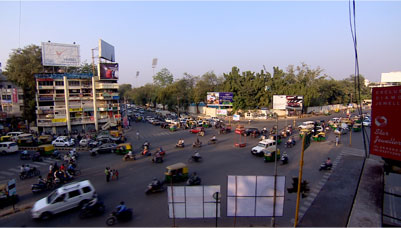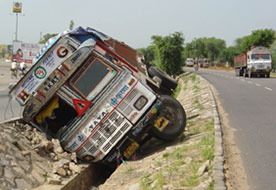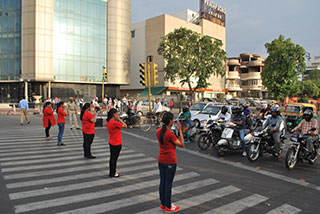From Team Satyamev Jayate

India is the road accidents capital of the world where every year an average of 1,40,000 people lose their lives and many more are fatally injured. It is wrong to call them accidents as most of them are murders waiting to happen and are entirely preventable.
In 2010 in Delhi, Shailesh Shetye lost his wife Kshama and their unborn child in a horrid accident when a BMW, being driven by a young man at breakneck speed, rammed into the car that he was travelling in. The young driver did not have a license. In Nakodar, Punjab, a school bus packed with children crashed into a truck laden with bricks. The bus, despite being condemned to be scrap, was refitted and put on the roads, its tyres worn out - a moving coffin. The driver was 22 years old, underage to drive a bus, and he was overspeeding when he rammed into the oncoming truck. Fourteen kids died on the spot. (Watch: Lives interrupted). In Mumbai, a school bus burst into flames killing five kids and badly burning six others as an LPG cylinder fitted inside exploded. (How safe are our children?). Dr Jerrom D’Cunha, a survivor of a crash by an overspeeding bus, vividly describes the trauma that a survivor goes through. (Watch: A survivor’s story)
Apneet Bakshi, just six years married with a little daughter, lost her husband Arjun Bakshi after his vehicle crashed into rods protruding six feet outside beyond the body frame of the truck they were being carried in. In 2012 alone, 9,028 people died in 28,217 road accidents caused due to rods protruding from trucks. It was only in 2014 that the government banned all protrusions from trucks and other heavy motor vehicles following a PIL in the Supreme Court of India filed by the NGO SaveLIFE Foundation.

Our national and state highways constitute only about 6.2% of the total Indian road network and yet accounted for 53.3% in total road accidents and 62.6% of those killed in road accidents in 2012. In our research, truck drivers across the country highlighted the same story: truckers driving without sleep for measly salaries, most of them without any formal drivers training, licenses procured without driving tests, many carrying multiple or duplicate licenses and driving under the influence of alcohol or drugs. Are then the deaths caused on our highways accidents or murders? Bhim Wadhwa, President of the All India Motor Transport Congress, openly stated that the industry would not be able to self-regulate itself to follow the law and instead, the government must provide exemplary punishment. When Maharashtra’s Additional Commissioner of Transport, Satish Sahasrabudhe, was confronted with the fact that drivers’ licenses were given without tests by corrupt RTOs the only solution he could offer was to insist on a test. (Watch: Highways to hell).
There is another important cause for road deaths and injuries which has not got the shame it deserves - faulty road designs and engineering. Hero Honda Chowk in Haryana has an expressway that divides villages and fields from workplaces, forcing thousands to cross the dangerous expressway. In Maharashtra, Khambatki Ghat has become another killer spot due to faulty road design. According to Dr Rohit Baluja, Director of Institute of Road Traffic Education, about 30% to 40% of road accidents take place due to faulty road design and engineering. (Watch: Designed to kill)

In the midst of this daily mayhem that takes place on the roads, are tireless crusaders who have made road safety their own problem. Like Ashutosh Soti, who lost his son in a road accident. Similarly in Delhi, a senior citizen fondly called ‘traffic baba’ is seen every evening at the traffic junction exhorting citizens to wear seat belts or helmets. (Watch: Meet Delhi’s Traffic Baba)
Half the lives lost can be saved if the victims are rushed to a hospital immediately and provided timely help. But the public rarely comes to their rescue fearing harassment from the police and the hospital authorities. What we desperately need is to replace our archaic laws with a new national road safety law which, among other things, will protect the good samaritan who comes to the help of those in need of medical help. (Watch: Don’t watch. Help). We need thousands of citizen volunteers who are trained to provide on the spot basic medical attention to those injured in road crashes. (Watch: How to help a road accident victim).
But the most important is for all road users to follow basic traffic laws and safety rules. If we ourselves break traffic laws there is no guarantee that we will return home safe every day. (Watch: Be the change).